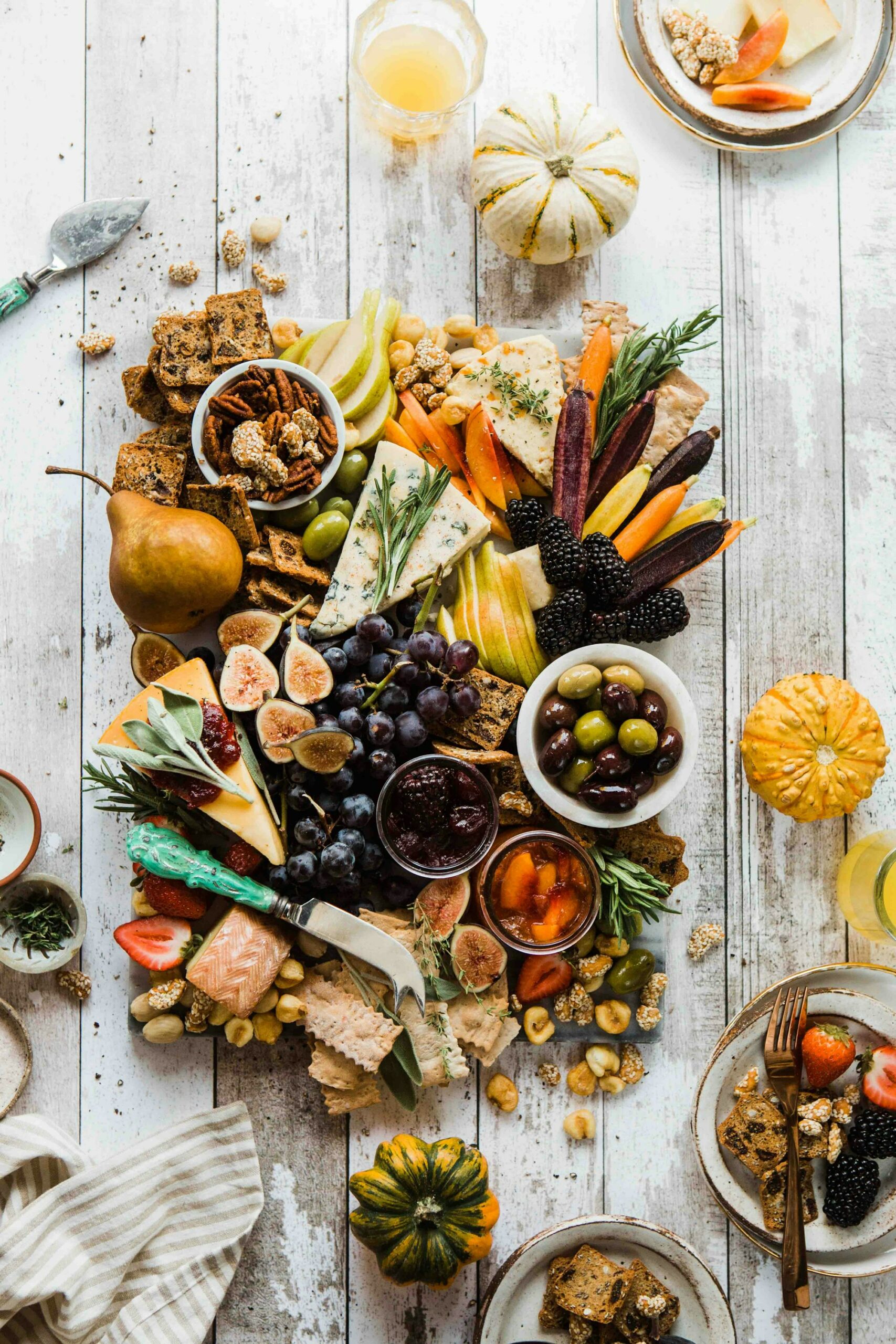Pregnancy brings an undeniable whirlwind of questions. What exactly matters when it comes to pregnancy nutrition? How can something as ordinary as food become so transformative, so full of contradiction and reassurance, fear and hope? Here, the lens zooms in on the everyday—plate, glass, fork, routine—suddenly charged with the responsibility of nourishing two lives at once. Whether you’re running your first lap around this winding track or deep into another pregnancy marathon, confronting the labyrinth of myths, cravings, nausea, and nutritional advice can be both exhilarating and dizzying. Yet one truth emerges: your food choices have far-reaching ripples, affecting not just you, but the future health, development, and well-being of your growing baby. So, what does pregnancy nutrition truly look like? Which nutrients take center stage? Are you supposed to “eat for two”—or is that just a tale clinging to the past? Let’s unravel the science, the practicalities, and the gentle art of nurturing your child from the very first bite.
The Realities of Weight Gain: Numbers, Myths, and Support
Pregnancy nutrition often starts with an uneasy glance at the scale. How much should you gain? Is your body on track? Each parent-to-be stands at the intersection of expectation and biology. The oft-quoted range—1 kilogram (2 pounds) per month in the first two trimesters, doubling in the third—acts as a navigational guide, not an absolute rule. Different starting points exist: a person with a higher pre-pregnancy BMI may need gentler increments, to avoid high-risk outcomes, while those starting with a low BMI must focus on incremental, nutrient-dense gains. Here, brief dips on the scale from early nausea usually don’t spell trouble; fetal growth often smiles upon the resilience of maternal physiology. Restrictive diets, however tempting in search of “control,” throw up red flags: growth, development, and your own long-term well-being can wobble on thin nutritional ice. Instead, prenatal care teams prefer tailored adjustments and detailed tracking. No single chart, no rigid expectation—rather, science-based, individualized targets, with empathy steering the ship.
Decoding Nutritional Priorities: What Grows a Baby?
Pregnancy nutrition is a balancing act—one that waltzes between daily energy needs, micronutrient intake, and dietary diversity. Calories? Yes, there’s a crescendo. An extra 150 calories per day in the first half—think two servings of dairy, or a large banana. Then, in the final sprint, an additional 300 to 450 does the trick. But more doesn’t mean unlimited. The well-worn melody of “eating for two” is an oversimplification; it’s the quality and density of nutrients, not raw quantity, that orchestrate the life within.
Vitamin B9 (Folic Acid) emerges from the scientific tapestry as a non-negotiable: vital for neural tube formation, red blood cell generation, and immune fortification. Absorbed from leafy vegetables, legumes, yolks, and nutritional yeast, or guaranteed through a supplement, it’s the architect of neural development. Some parents begin supplementation months before conception, acting on clear evidence: adequate folic acid staves off neural tube defects.
Vitamin D operates behind the scenes, ensuring calcium absorption and bone integrity—your baby’s, yes, but your own, too. Deficiency can remain silent, so some require supplementation, especially in dim winters or if diets skip eggs, oily fish, or fortified foods. It’s a quiet guardian of skeletal and immune health.
Omega-3 fatty acids, particularly DHA, are not just buzzwords—they become brain-building blocks, with robust links to cognitive and visual maturation. Sardines, mackerel, flaxseed, walnuts: each holds a sliver of this puzzle.
Iron and iodine demand attention: iron prevents anemia and supports fetal oxygenation, while iodine powers healthy thyroid and neurological development. Both lurk in animal proteins, eggs, dairy, legumes, and, for iodine in particular, iodized salt and certain seafoods. Yet high-mercury species—think swordfish, shark, some large tunas—should be rare guests at the table: their heavy metal load risks fetal nerve development.
Macronutrients: Building Blocks for Pregnancy Wellness
Let’s move from nutrients-with-a-name to the backbone of pregnancy nutrition—macronutrients. Protein (60–71 grams daily) is indispensable: building tissues, fueling blood volume, repairing the subtle wear and tear of gestation. Lean meats, eggs, beans, tofu, nuts—they stand ready to serve.
Carbohydrates supply the lion’s share of your energy, but forget the white bread and sugary box cereals. Instead, lean into whole grains, vegetables, legumes, and fruit. The bonus? Dietary fiber eases constipation, a familiar pregnancy foe.
Fats, too, play nuanced roles. Unsaturated fats (olive oil, fatty fish, nuts) knit together cell membranes and fuel the growing brain. Saturated fats—abundant in processed foods and fatty animal products—deserve a smaller spotlight. Trans fats (those sneaky, artificial additions) are best reserved for nutrition textbooks and not your plate.
Micronutrients and Pregnancy Nutrition: Science Behind the Numbers
Numbers aren’t just academic: they shape daily life, grocery lists, menus. Scan through the essentials:
- Folate (Vitamin B9): 600 mcg/day: Green leafy, lentils, fortified grains. Supplement usually necessary.
- Iron: 27 mg/day: Lean meat, legumes, dark greens. Iron absorption soars with vitamin C-rich foods (imagine spinach–orange pairings).
- Calcium: 1,000 mg/day: Dairy, fortified plant milks, nuts, leafy greens.
- Vitamin D: 600 IU/day: Sunlight, eggs, oily fish, fortified foods.
- Iodine: 220 mcg/day: Iodized salt, seafood, dairy.
- Choline: 450 mg/day: Eggs, milk, peanuts.
- Zinc, magnesium, B complex vitamins, vitamin C, omega-3 DHA: Each with a daily target, each quietly supporting immunity, metabolism, neural wiring, and development.
These aren’t checkboxes—they’re the invisible scaffolding holding up both parent and baby through the months of transformation.
Structuring Your Day: Myths, Meals, and Schedules
You might pause, spoon hovering above the soup, wondering: is “eating for two” a scientific imperative or a relic of folklore? The answer: focus on optimal intake and diverse variety, not just doubling portions. Three balanced meals per day, punctuated by nutritious snacks, paint a picture of resilient pregnancy nutrition.
- Breakfast: Water, whole grains, healthy fats (cheese, nut butter), calcium source, protein, fresh fruit, and a comforting cup of tea.
- Lunch: Begin with raw vegetables or soup, transition to a protein-rich main with wholesome grains or legumes, round out with cheese, yogurt, or fruit.
- Snack: Listen to hunger—nuts, fruit, a little dark chocolate, or yogurt can settle the stomach and safeguard energy.
- Dinner: Vegetables, grains or starchy foods, a drizzle of healthy oil, and something rich in calcium; giving the body two hours before bed aids digestion and comfort.
Hydration threads through each meal. The advice? Eight to twelve cups per day—water remains the unsung hero.
Food Safety, Caffeine, and Habits in Pregnancy Nutrition
Pregnancy nutrition doesn’t end with what’s on the plate; food safety lurks behind every bite. So: wash hands, scrub produce, use separate chopping boards for raw and cooked foods, and ensure animal products are well-cooked. Unpasteurized dairy, raw eggs, undercooked meats, and deli salads? Steer clear. Raw sprouts and high-mercury fish also belong on the caution list.
Caffeine? Keep intake below 200 mg daily—roughly one to two small cups of coffee. As for alcohol, every reputable scientific consensus draws a firm line: no amount has been proven safe.
Supplements and Specialized Needs: Decoding the Medical Science
Is a daily prenatal vitamin a must? For most, yes—the insurance policy against unpredictable diet gaps. Look for one delivering the full array: folic acid, iron, calcium, vitamin D, B vitamins, zinc, occasionally omega-3. Customization is sometimes essential: those with anemia, multiple pregnancies, or after weight-loss surgery require more vigilant monitoring and tailored additions. Only consider vitamin A supplements as beta-carotene, since retinol forms spell overdose risk.
For vegetarians, vegans, or parents faced with malabsorption challenges, you may need extra vitamin B12, iron, calcium, or vitamin D—preferably under the watchful eye of a healthcare provider. Blood tests can pinpoint hidden gaps, and targeted supplements adjust the balance.
Beyond the Basics: Special Circumstance, Everyday Realities
Adolescent parents? Double down on iron and calcium—your body is still building alongside your baby’s. Those who are underweight should focus on nutrient-rich calorie increases, while those who are overweight or have a BMI above 30 concentrate on high-quality, not restrictive, eating.
Carrying twins or multiples shifts the needs: more calories, protein, iron, and folic acid, with enhanced multivitamin support. Your medical team walks closely with you; higher-risk journeys are shared.
Common discomforts—nausea, heartburn, constipation, unexpected cravings—aren’t mere nuisances. Small, frequent meals help temper nausea; ginger or bland foods can provide respite. Eating earlier in the evening may stave off heartburn, and fiber-rich foods or extra fluids gently ease sluggish digestion. Food aversions and cravings spark curiosity in science, but rarely harm; a bit of flexibility, plus professional guidance if foods are severely limited, preserves well-being.
Hydration, Activity, and Well-Being: The Holistic Picture
Hydration, yes—a drumbeat repeated for good reason. Two liters, maybe a little more, refreshes blood volume, staves off headaches, and prevents the drag of constipation.
Snacks need not be dull: whole-grain sandwiches, veggie sticks with yogurt, bean soup, or fortified cereals—a palette as varied as your appetite. Meals thrive on a balanced matrix: protein, fiber, whole grains, calcium.
Physical activity—a brisk walk, swimming laps, or gentle prenatal yoga—stimulates circulation, combats discomfort, and lifts the fog of fatigue or anxiety. Always confer with your healthcare team before starting any new exercise, but the evidence points conclusively toward moving—at your own pace, in your own time.
Mood has its own rhythm in pregnancy. Omega-3s, vitamin D, B vitamins, and iron do more than shape organs—they subtly cushion emotional swings. Structured routines, a little sunlight, supportive circles, and communication anchor you through the turbulence.
Lactation and Postpartum: Continuing the Journey
What happens after the baby arrives? Pregnancy nutrition doesn’t retire; rather, it shifts focus. Breastfeeding creates an extra demand—an added 500 calories daily, with protein, vitamin C, folate, and zinc marking the nutritional priorities. Hydration and rest climb higher on the priority list, hand-in-hand with self-care.
Continue those prenatal vitamins through breastfeeding, topping up iron, calcium, and vitamin D as needed—especially for parents of multiples or after bariatric surgery. Feeling tired, foggy, or unwell? Symptoms of nutritional gaps can be subtle; your healthcare team and regular blood work play a pivotal role in keeping you healthy.
Structured meal patterns, gentle exercise, and attentive rest all foster healing and well-being throughout the postpartum chapter.
Culture, Choices, and Everyday Living
Pregnancy nutrition never exists in a vacuum. Family traditions, cultural preferences, and personal beliefs flavor every meal. No single diet or approach is universally “best”—the scientific consensus only insists on the backbone: energy, variety, key nutrients, safety, and flexibility. Working with traditional dishes and cooking methods is not just possible but encouraged—each can be adapted, each holds space for the nutrients that matter.
Key Takeaways
- Pregnancy nutrition is much more than rules—it’s about balance, daily choices, and trusting credible science while honoring your personal context.
- Focus on a plate full of color: fruits, vegetables, whole grains, lean proteins, and healthy fats form the nutritional bedrock.
- Prioritize folic acid, iron, calcium, vitamin D, iodine, and omega-3s; supplement as needed.
- Keep hydration top of mind, limit caffeine, and sidestep alcohol.
- Maintain food safety vigilance—thoroughly cook animal products and avoid raw or high-mercury options.
- Trust in the power of gentle, regular activity for mental and physical health.
- Supplements offer an effective safety net but should always be personalized with a healthcare provider, especially for those with special dietary requirements or medical conditions.
- Family culture, beliefs, and recipes can coexist beautifully with optimal pregnancy nutrition when small, thoughtful adaptations are made.
- Support is always available—reach out to healthcare professionals for individualized guidance.
- For ongoing support, evidenced-based insights, and free health questionnaires for your child, try the Heloa app—your pocket ally for tailored, personalized advice.
Every pregnancy story is unique. Drawing upon the best of nutritional science, clinical expertise, and everyday wisdom, parents can journey through these transformative months with knowledge, confidence, and support—one mindful bite at a time.
Questions Parents Ask
What are some easy ways to include more vegetables and fruits in my pregnancy diet?
Getting enough fruits and vegetables can feel challenging, surtout if you’re dealing with cravings or nausea. Try adding chopped veggies to omelets or blending leafy greens into smoothies for a gentle, nutrient-packed start to your day. Fresh or dried fruit can be a simple snack, easy to keep on hand for busy moments. Roasting vegetables with a bit of olive oil brings out sweetness and feels comforting. Remember, all forms—fresh, frozen, or canned (without added sugar or salt)—can help boost your daily intake. Each little step counts toward your well-being and your baby’s development, so don’t worry if progress is gradual.
How can I handle pregnancy nutrition if I follow a vegetarian or vegan diet?
Following a vegetarian or vegan lifestyle during pregnancy is possible et s’adapte très bien avec un apport équilibré de nutriments. Focus on plant-based protein sources like beans, lentils, chickpeas, tofu, and tempeh, and try to pair iron-rich foods (like lentils) with vitamin C sources (such as bell peppers or oranges) to improve absorption. For calcium and omega-3s, look to fortified plant milks and seeds like chia or flaxseed. Since vitamin B12 is not naturally found in plant foods, a supplement is usually recommended. Feel free to reach out to a healthcare professional for guidance and reassurance as you navigate your options—your choices are respected, and support is always available.
Are there practical tips to stay hydrated during pregnancy?
Hydration is important, especially during pregnancy. If plain water isn’t appealing, infuse it with fresh fruit, slices of cucumber, or a sprig of mint for a subtle flavor. Carry a bottle with you to sip throughout the day, and consider herbal teas or sparkling water for variety. Some parents find setting little reminders helpful. If nausea or heartburn make drinking difficult, taking small sips regularly may feel more comfortable than large amounts at once. Each effort you make contributes to your comfort and your baby’s health, so be gentle with yourself as you find the routine that suits you best.
Further reading:









